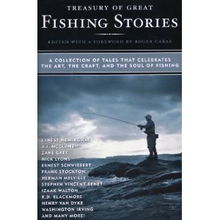Introduction:
Angling for perch is a thrilling and rewarding pursuit that can be both relaxing and exciting. Perch, known for their spirited fight and delicious taste, are a popular catch among anglers of all skill levels. Using a fishing rod to catch perch requires a combination of patience, technique, and a good understanding of the fish's habits. In this article, we'll delve into the essential techniques and tips on how to use a fishing rod to successfully catch perch.
Understanding Perch Behavior:
Before you start fishing for perch, it's important to understand their behavior. Perch are bottom feeders and are often found in weedy areas, along the edges of lakes, rivers, and ponds. They are attracted to a variety of bait, including worms, insects, and small fish. Knowing where and how to look for perch will significantly increase your chances of a successful catch.
Choosing the Right Equipment:
The first step in perch fishing is to choose the right equipment. Here are some key considerations:
Fishing Rod: A medium-action fishing rod is ideal for perch fishing. It should be light enough to be easily maneuvered and strong enough to handle the fish's spirited fight.

Fishing Reel: A spinning reel is commonly used for perch fishing due to its ease of use and precision in casting.
Line: Monofilament line in the 6-10 pound test range is sufficient for perch. It provides enough strength to land the fish without being too heavy, which can spook them.
Hook: A size 6 to 10 hook is appropriate for perch. A sharp, lightweight hook is preferable as it will allow the perch to bite more easily.
Bait: Depending on the season and the area you're fishing, you can use live bait like worms, insects, or small fish, or artificial baits like jigs or spinners.
Techniques for Catching Perch:
Locating Perch: Start by looking for areas with vegetation, rocks, or structures where perch are likely to congregate. Pay attention to areas with varying depths, as perch will move up and down the water column depending on the temperature.
Presenting the Bait: Once you've found an area with perch, cast your bait close to the structure or vegetation. Let it sink to the desired depth and then slowly retrieve it. Perch are often found in shallow waters, so you may not need to fish deep.
Patience is Key: Perch can be quite elusive, and they may not bite immediately. Be patient and keep your line taut, as a subtle bite can be easily missed.
Adjusting Techniques: If you're not getting bites, try changing your approach. This could mean adjusting the speed of your retrieve, changing your bait, or even trying different depths.
Hooking the Bait: When a perch takes your bait, set the hook gently but firmly. A quick, but controlled, pull will help you land the fish without pulling it away.
Handling the Fish: Once you've caught a perch, handle it gently to minimize stress. Keep it in the water as much as possible, and only handle it when necessary.
Advanced Techniques:
Trolling: For those who enjoy more dynamic fishing, trolling can be an effective way to catch perch. Use a small bait or lure and let it move with the current to attract the fish.
Night Fishing: Perch can be caught at night using artificial lights to attract them. This requires a different approach and equipment, but it can be a fun and productive way to fish.
Using a Perch Finder: Some anglers use perch finders, which are sonar devices that can help locate schools of perch. This technology can be particularly useful in larger bodies of water where it's difficult to find fish.
Conclusion:
Catching perch with a fishing rod can be a highly enjoyable and rewarding experience. By understanding the fish's behavior, choosing the right equipment, and applying the proper techniques, you can increase your chances of a successful catch. Whether you're a beginner or an experienced angler, mastering the art of perch fishing can lead to many memorable days on the water. Happy fishing!












